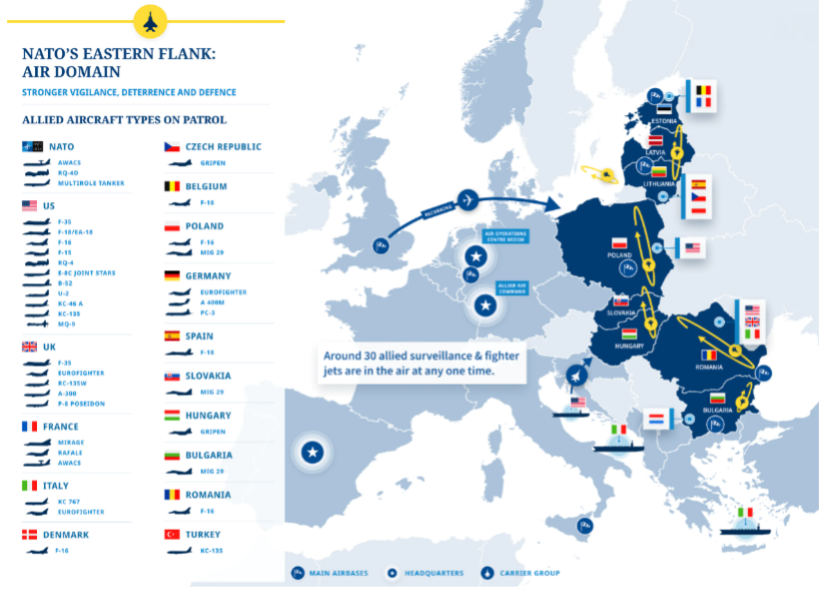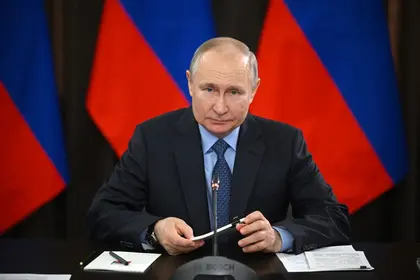On December 13, 2021, Russian Deputy Foreign Minister Sergey Ryabkov stated that the Paris Charter which “fully recognizes the freedom of States to choose their own security arrangements” must be balanced with the phrase “that this must not be done at the expense of the security of other states.” He warned all countries opposing Russia’s right to veto NATO membership decisions will face grave consequences.
Four days later, Russia published both a draft treaty between the U.S. and the Russian Federation “on security guarantees,” as well as a draft agreement on “measures to ensure the security of the Russian Federation and the Member States of the North Atlantic Treaty Organization.”
NATO was asked to refrain from any further enlargement.
Yesterday, Finland became the 31st NATO member. Swedish membership has so far only been thwarted by non-democratic forces within the Alliance itself. Not Russia.
Having cited opposition to NATO's eastward enlargement as one justification for invading Ukraine, Finland’s membership is another testimony to his failed strategy as Ukraine and Moldova continue to move closer to NATO integration.
Crucially, Finland’s accession kills one of the most well-established Russian disinformation messages about NATO's so-called “eastward expansion”.
“Russia's recent invasion of Ukraine has prompted the Finns to seek safety under NATO's collective defense agreement. Finland's accession doubles the length of NATO's border with Russia.”

French Policy Playing Into Iranian and Russian Hands
In reality, NATO’s eastward expansion is not part of a strategy to encroach on Russia but the consequence of an aggressive Russian foreign policy that over centuries has ensured its continuous expansion at the cost of its neighbours.
Like Finland, other countries have actively sought the protection of NATO out of fear of Russia’s westward expansion.
NATO’s eastward expansion has never been a result of offensive intent but a defensive action under the auspice of the “Charter of Paris for a new Europe” stating that “we fully recognize the freedom of States to choose their own security arrangements.”
Russia wanted to reduce NATOs force posture in all countries which joined the Alliance after 1997 (Albania, Bulgaria, Croatia, the Czech Republic, Estonia, Hungary, Latvia, Lithuania, Montenegro, North Macedonia, Poland, Romania, Slovakia, and Slovenia). Having started wars in Europe, Russia tried to limit the Alliance's ability to forward deploy units in response to its aggressive foreign policy.
Asking NATO to “withdraw” from nations formerly part of the USSR (NATO members after 1997), Russia was already occupying and waging war against former-Soviet countries in direct contradiction to the agreement it was proposing.
As a result of Russia’s full-scale invasion of Ukraine, however, Putin has achieved the exact opposite result. NATO members have started rebuilding their Armed Forces. NATO’s defense plans were activated and thousands of extra troops from both sides of the Atlantic were deployed. Over 40,000 troops, along with significant air and naval assets, were placed under direct NATO command in the eastern part of the Alliance, supported by hundreds of thousands more from Allies’ national deployments. The Alliance has established eight battlegroups along its eastern flank, from the Baltic Sea in the north to the Black Sea in the south. The member states have agreed to strengthen forward defenses, enhance the battlegroups in the eastern part of the Alliance up to brigade level, transform the NATO Response Force and increase the number of high-readiness forces to well over 300,000.
The efforts will be supported by more pre-positioned equipment and supplies; more forward-deployed capabilities; and upgraded defense plans, with forces pre-assigned to defend specific Allies. NATO Allies are also increasing the resilience of their societies and infrastructure.
Instead of the withdrawal it was demanding, Russia triggered the biggest overhaul of Allied collective defense and deterrence since the Cold War.
Russia demanded that the U.S. refrain from flying heavy bombers or deploying surface warships in areas “where they can attack targets in the territory” of Russia. In principle, it called on NATO to refrain from operating in the Black Sea, the Baltic Sea, the Barents Sea and the Arctic, as well as the airspace over Northern, Central and Eastern Europe.
Again, it has achieved the exact opposite.

NATO has substantially increased the number of fighter jets on alert across Eastern Europe in response to Russia’s unprovoked attack on Ukraine. According to NATO around 30 surveillance and fighter aircraft are in the air over Eastern Europe at any one time.
NATO has increased its air presence in Eastern Europe with surveillance aircraft and tankers. Since February 2022, NATO AWACS have conducted regular patrols over eastern Europe and the Baltic Sea region to track Russian warplanes near NATO borders. The Alliance has forward deployed AWACS to Romania.
Russia has, however, succeeded in stopping NATO from deploying its maritime forces into the Black Sea. The last non-Black Sea NATO warship left on 2 January 2022.
The U.S. was told to withdraw its nuclear weapons from Europe and eliminate all existing infrastructure on the continent.
Obviously, the White House ignored the demand.
Russia has instead resorted to nuclear threats and actions, including the modernization and upgrade of nuclear storage facilities in Crimea, forward deployment of platforms capable of delivering nuclear weapons, (allegedly) the positioning of Iskander-M and preparations for the deployment of tactical nuclear weapons to the Republic of Belarus.
Additionally, Russia plans to form a division of special-purpose submarines that will carry Poseidon nuclear-capable torpedoes as part of the country's Pacific Fleet by the end of 2024 or the first half of 2025.
It is a sign of weakness, not strength. Russia is increasingly flaunting its nuclear capabilities as its conventional forces are being decimated in Ukraine.
It has not only lost a staggering number of soldiers but also its elite forces, its newest and most modern tanks (3,600) and armoured personnel vehicles (7,000). Russia has lost more than 2,700 pieces of artillery and a great part of its ammunition stocks. It is running out of precision-guided missiles. The Russian Air Force has proven incapable of achieving air superiority over a country that has 5-7 times fewer combat aircraft of inferior quality. Russian logistical support is failing as the morale and motivation of its soldiers hits rock bottom.
Under Putin’s watch, Russia’s military power has been significantly reduced. A Great Power wannabe has instead become dependent upon China, Iran and North Korea as its own military power dwindles.
That said, it has still succeeded in limiting Western support to Ukraine. That’s not a sign of NATO strength. It is a cause for concern.
The views expressed in this opinion article are the author’s and not necessarily those of Kyiv Post.
You can also highlight the text and press Ctrl + Enter






